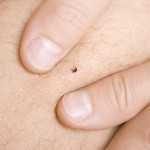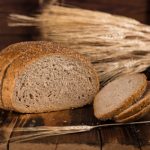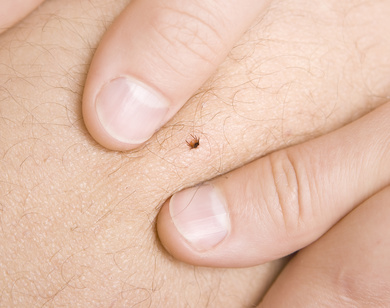Laboratory Testing & Evaluation
Conventional
- Blood Chemistry and Complete Blood Count
- Standard Urinalysis
- Cardiovascular/Diabetes panel: a panel designed to assess and monitor inflammatory and nutritional markers that are directly associated with diabetes and cardiovascular disease.
Environmental
- Heavy Metals Urinalysis: Initially, this test is run for two samples; a first morning urine specimen and a six hour urine specimen after taking a chelating agent. Both specimens are analyzed for 15 heavy metals. The first morning urine assesses current exposure; the six hour collection assesses body burden. After the initial testing, the six hour urine specimen is used to track treatment effectiveness.
Porphyrins: Analyzes urine for defects in porphyrin pathways. This test is useful for screening children for heavy metal toxicity. This test can help identify the severity of heavy metal and chemical exposures resulting in impaired metabolism and cellular dysfunction.
- Xenobiotics: Serious health problems are associated with chronic exposures to these synthetic chemicals in air, water, and food. This test analyses chronic exposure to solvents, chlorinated and brominated hydrocarbons, phthalates, and organophosphates that are associated with metabolic, neurological, and hormonal dysfunction.
Metabolic
- Organic Acids: Organic acids are metabolic intermediates produced in pathways of energy production, detoxification, neurotransmitter breakdown, and intestinal microbial activity. Urinary OA’s reveal nutritional deficiencies, toxic overload, inherited enzyme deficits, metabolic inhibition, and imbalance in digestive tract microbiology.
- Amino Acids: Failure to obtain enough essential amino acids has serious health implications. Deficiencies are implicated in gastrointestinal dysfunction, biotransformation pathways, neurotransmitter metabolism, and chronic metabolic acidosis.
- Hormones and Neurotransmitters: Physiological Stress and Emotional stress affect hormone and neurotransmitter metabolism. Identifying these stresses and treating the underlying hormone and neurotransmitter imbalances is critical to long-term health and wellbeing.
- ADMA: A very strong marker of endothelial dysfunction and a predictor of insulin resistance.
 Nutritional
Nutritional
- Micronutrient Test: Measures the functional nutrient level of white blood cells. The nutrients that are tested are vitamins, minerals, antioxidants, and essential amino acids. Accurately shows a 3 – 6 month window of nutritional deficiency, a cause of many chronic conditions. For more information please click here.
- Stool test for SIgA: The most sensitive test for Gluten, Casein, Soy, Egg sensitivities.
- Fatty Acids: This test helps establish deficiencies and proper balance of omega 3, 6, and 9 fatty acids.
Digestive Functional
- Comprehensive Digestive Analysis: The use of DNA analysis provides a more complete and accurate assessment of bacterial and parasitic inflammation than conventional culture techniques. The test also looks at the strength of the digestive system in the breakdown and absorption of essential nutrients.
- Gastro pH: Proper digestion and absorption of nutrients is influenced by stomach pH. This simple in office test establishes a basis for good digestive function.
- Intestinal Permeability: When the lining of the digestive tract is compromised, undigested proteins will be absorbed into the body generating an immune response. The immune response may expose the person to an autoimmune process. This test for intestinal permeability establishes a baseline for gut dysfunction and a monitor for therapeutic results.
- Mycology Profile: Stool testing for yeast/fungi in the gut. Yeast overgrowth has been linked to many chronic conditions such as headache, bloating, atopic dermatitis, and fatigue.
Genetic Testing
- Detoxification Profile: Evaluation of single nucleotide polymorphisms helps to understand specific phenotypical variations in a personal genome that affects detoxification pathways of biotransformation. Specifically looks at Phase 1 Cytochrome p450 enzymes, Phase 2 Pathways, and Oxidative Stress.
- Celiac and Gluten Sensitivity Profile: This genetic testing helps to establish the susceptibility to one or both of these conditions.
Immunological
Lyme Profile Traditional: ELISA and Western Blot for Borrelia burgdorferi and other tick borne infections.
- Lyme Disease Expanded: Comprehensive immune function against Borrelia burgdorferi includes T Cell activation and pro-inflammatory cytokine levels.
- Lyme Disease and Coinfections: A comprehensive multi-peptide ELISA that is the most sensitive method for detection of tick borne diseases. This method uses advanced in vivo induced antigen technology and identifies antigens that are immunogenic and are expressed in vivo during human infection.
- Autoimmune Panel: Autoimmune antibodies are measurable well in advance of the manifestation of pathology. This new expanded panel identifies susceptibility to autoimmune diseases and establishes a course of prevention.
Is It Brain Fog?
https://youtu.be/h4unC7GUz-c
Take the Brain Fog Survey - Complete this Form
Brain Fog Survey
Naturopathic Medicine in New Canaan, CT
Are you looking for a naturopathic doctor in New Canaan CT?
Naturopathic Medicine recognizes that you, the patient, have very specific health issues that should be addressed on three levels: physical, emotional, and spiritual. Each level has its own complexity; the sum of the levels is you. This makes you a unique individual.
Our practice is patient focused which allows me to develop an individualized treatment plan for you. It means that I must listen very closely and carefully to your health concerns so that the treatment plan is appropriate and accurate for you. Ultimately, you are the healer and we facilitate a plan to help you remove the obstacles to your healing.
Research has shown that the more involved a patient is with the decisions about his/her treatment, the better the clinical outcome. When you visit our office don’t be surprised to hear questions like: What do you most fear about your illness? What impact have your symptoms had on your life? How are you hoping that I can help you today? What kind of treatment are you looking for? What do you believe is the source of your problems? Patients who choose Naturopathic Medicine are passionate for life.
Here at Family and Environmental Medicine, we believe in emphasizing the informative aspects of naturopathic medicine, and strive to make them easily accessible.
Naturopathy isn't limited in how it can help, in fact, Naturopathic Doctors can treat many conditions...
https://youtu.be/upR918DUU68
https://youtu.be/Iw2Z9Runlt4
https://youtu.be/l0_8rxM6liI
Looking for a naturopathic doctor in New Canaan, Connecticut that takes insurance?
Family and Environmental medicine is proud to be an in-network provider for the following insurance providers.
Anthem BlueCross BlueShield
Anthem Blue Cross and Blue Shield understand how health connects individuals and communities together. Their commitment to deliver better healthcare brings added value to their insured and improves overall health.
Visit Anthem BlueCross BlueShield
Cigna
Cigna’s roots trace back more than 200 years ago, but the today’s company was created from the merger of INA Corp and
Connecticut General Corporation in 1982.
Reiki for Cancer
Reiki for cancer - CAM therapy
Cancer treatments, while life saving for many people, often cause painful and debilitating side effects to a person's whole body system. Treatments like radiation, chemotherapy and surgery can often effectively put cancer into remission for the patient. However, such treatments also cause severe mental and physical side effects such as nausea, vomiting, anxiety and depression.
Complementary and alternative medicine (CAM) therapies such as massage and Reiki for cancer are gaining popularity among cancer patients. People generally use these methods in addition the traditional medical treatments they receive. Complementary and alternative therapies frequently decrease feelings of stress, anxiety or depression in the patient.
Reiki is not considered to be a cancer treatment in and of itself but is used and viewed by most as a complementary therapy designed to work in conjunction with an existing ongoing medical treatment. Some patients undergoing cancer treatment feel that Reiki has helped them manage pain. Others feel that Reiki helps them be more relaxed, or they have experienced a lessening of the physical side effects of treatments like radiation and chemotherapy through the complementary use of Reiki.
The Science of Reiki for cancer
Unfortunately not a lot of scientific data exists yet that measurably details the effectiveness of Reiki for cancer including serious cancers like a mesothelioma diagnosis, lymphoma or melanoma. Still, a lot of anecdotal evidence exists that dictates how individuals have experienced the benefits of Reiki during their cancer treatments. Also, more scientific studies are being performed regularly, and proponents of Reiki remain optimistic that further evidence to support the use of Reiki during cancer treatment will emerge.
In an April 2011 article in The Annals of Surgical Oncology, Dr. Sheldon Marc Feldman, Columbia University Medical Center's Chief of Breast Surgical Oncology "incorporates the role of Reiki practitioners" to reduce the stressful impact of traditional cancer treatments on the body. Dr. Feldman recommends Reiki to patients as a way to ready themselves before treatment. He also recommends it as a treatment to use concurrently during chemotherapy, radiation or surgery as well as after those procedures.
Reported Outcomes of Reiki for cancer
During several documented cases, patients felt that with the assistance of Reiki performed by a certified Reiki practitioner much of the other medical procedures and treatments seemed easier to bear mentally. The Reiki for cancer treatments aided the patients in feeling greater tranquility and peace of mind.
People also have reported that they feel more empowered with the use of Reiki during medical procedures. There is additional anecdotal evidence from patients who state that their use of Reiki for cancer has helped them alleviate pain as effectively as or more effectively than pharmaceutical treatments. Some people have reported as well that by using Reiki during radiation treatments they felt that their bodies held up better under the treatment and did not experience much tissue destruction.
Proponents of Reiki for cancer therapy believe that the benefits cancer patients receive are because Reiki energy itself is the energy of the life force, which aids the body in renewing and regenerating itself during times of trauma. While evidence of this cannot be proven, evidence does exist that shows that any calming therapies including Reiki, massage and meditation provide benefits to the patient.
Reiki for cancer – Areas we serve
Family and Environmental Medicine help patients with cancer who implement natural, complementary and alternative medicine therapies. The information contained in this article is not intended as the sole natural medicine for cancer treatment but should be considered as part of a holistic program of healing. Dr Gary S. Gruber provides private appointments for patients from around the country. The majority of patients are from the local area including Greenwich CT, Stamford CT, Darien CT, Norwalk CT, New Canaan CT, Wilton CT, Westchester County, NY, NYC, and Northern NJ. For other natural solutions to cancer please contact us at (203) 966-6360.
What is Making Us Fat?
Fat is really not a bad thing unless it is a cause of inflammation and chronic disease.
Fat is a source of energy and it is the backbone for making cells and signaling chemicals called hormones. Here is a shocking statistic: one out of three men and women in the United States are considered overweight. And alarmingly, 17% of children between 2 and 19 years are obese. Every year thousands of people resolve to lose weight, to shed those excess pounds that creep up year by year. Medical experts report that diet and exercise are the key to weight loss. We are bombarded by commercials and programming that suggest diet and exercise are the solution. We buy carefully selected menus and enlist in fitness clubs and programs. Some are successful yet most people shed a few pounds only to rebound to past levels and beyond. The results are miserable and very few people lose weight permanently. People blame themselves for poor lifestyle choices. It is predominant “medical wisdom” that suggests changing behaviors will lead to permanent weight loss.
With a seemly unlimited number of diets and exercise programs, why are the results so poor? “Convincing evidence suggests that diet and activity level are not the only factors in this trend – chemical “obesogens” may alter human metabolism and predispose some people to gain weight.”(1)
Obesogen is a new medical term that combines the two words obesity and estrogen (a hormone in both men and predominately women). Hormones produced naturally in the body are chemical signals that help different systems communicate with each other. Hormones attach to cell receptors like a “lock and key” mechanism that turns on or turns off gene expression. For example, the brain makes a chemical called thyroid stimulating hormone (TSH) that stimulates the thyroid gland to make another chemical thyroxine (T4) that circulates to the liver and kidneys where it is converted to triiodothyronine (T3). T3 is the activated thyroid hormone that stimulates cells in the digestive system, the urinary system, the brain, and other systems to make energy and do work. All along the pathway, each thyroid hormone stimulates a cell receptor causing the cell to do something. Hence, obesogens are chemicals that act like cellular signaling hormones that influence weight gain and the inability to lose fat.
The understanding of how obesogens affect cells is still being worked out by scientists and physiologists. The best information so far is based on research concerning tin biocides (“toxic to life”). In this research, it was found that these tin-based chemicals stimulated cells by activating a very specific cell receptor, the peroxisome proliferator-activated receptor (PPAR-gamma). (2) Adipose cells are storage depots for fat, a source of energy when food is scarce. In the beginning, when new cells are growing and haven’t quite determined what type of cell they should be, activating the PPAR-gamma receptor of the cell will cause it to become an adipose cell. When an existing adipose cell has its PPAR-gamma receptor stimulated the cell adds more fat into storage. This mechanism strongly suggests that the environment affects fat metabolism. In a mouse study the researchers gave low doses of perfluorooctanoic acid (PFOA, found in Teflon, Scotchguard, and Gore-Tex) to a group of mice in the same diet of their brothers and sisters who did not receive PFOA. The mice whose diet contained PFOA became morbidly obese. (3)
Obesogens are ubiquitous. They are in our food and water; they are in the air we breathe. Developing children and adolescents are considered more susceptible than adults, but this could be because children born today have a higher total load than their parents and grandparents .(4)
Here are some known and suspected chemicals that are obesogens: (1)
Diet
- Fructose
- Genistein
- Monosodium Glutamate
Smoking
- Nicotine
Pharmaceuticals
- Diethylstilbestrol
- Estradiol
Industrial Chemicals
- Bisphenol A (BPA)
- Organotins
- Perfluorooctanoic Acid (PFOA)
- Phthalates
- Polybrominated Diphenyl Ethers (PBDEs)
- Polychlorinated Biphenyl Ethers (PCBs)
Organophosphate Pesticides
- Chlopyrifos
- Diazinon
- Parathion
Other Environmental Pollutants
- Benzo[a]pyrene
- Fine Particulate Matter (PM2.5)
- Lead
Some of these chemicals like plastics and pesticides are pervasive in our environment. No one can escape them. It is best to minimize exposure by eating organic fresh prepared foods. Avoid cooking with Teflon. Avoid cans lined with plastic as well as plastic food containers. Drink water that has been filtered through a high-quality industrial filter. Avoidance is critical.
Experts agree that all people are carrying a body burden of a majority of these chemicals. While it is very difficult to accurately measure the body burden of these chemicals there is good clinical evidence that supporting and enhancing fat and detoxification metabolism to eliminate these chemicals will result in permanent weight loss.
For information about our Weight Loss and Diabetes Program see: https://sciencemeetsnature.org/services/programs/
Bibliography and Footnotes
- Holtcamp, W. Obesogens: An Environmental Link to Obesity. EHP 120:2 Feb 2012 A63 – A68.
- Evans RM, et al. PPARs and the complex journey to obesity. Nat Med 10(4):355-361 (2004).
- Hines E., et al. Phenotypic dichotomy following developmental exposure to perfluorooctanoic acid (PFOA) in female CD-1 mice: Low doses induce elevated serum leptin and insulin, and overweight in mid-life. Molecular and Cellular Endocrinology 304 (2009) 97 – 105.
- Environmental Working Group. Body Burden: The Pollution in People. http://www.ewg.org/sites/bodyburden1.
See also, Across Generations: Industrial chemicals in mothers and daughters: The Pollution we share and inherit. http://www.ewg.org/reports/generations.
U.S. Health Care Crisis - Part 1: The Myth of the Medical Model
U.S. Health Care Crisis– Part 1: The Myth of the Medical Model
Gary S. Gruber ND
Recent political rhetoric insists that the best public policy and solution to the “health care crisis” is to make health care affordable and accessible to all. This basic idea that each person should have responsibility for and be empowered by her or his own health care is a very good one. However, there is a hidden issue that is not addressed: What is the best medical model of creating health care?
What if the understanding of what fixes health problems is essentially wrong?
Look at the leading causes of death that create the spiraling costs for Americans: Heart Disease, Stroke, and Cancer. These diseases, although associated with age, in fact affect almost all age groups and are on the increase at rates that are faster than the growth of the aging population. The cost to society is escalating with no end in sight. According to a recent study by Cathy J. Bradley, PhD*, the cost of cancer in the year 2000 of $115.8 billion is expected to jump to $147.6 billion by the year 2020, a leap of almost 30%. In 2008, alone, the American Heart Association estimated the cost of cardiovascular disease to be $448.5 billion**. It is no wonder we feel we are in the midst of a health care crisis.
However, our medical model for dealing with these killers is based on the science of treating infectious diseases. The basic mythology built into this model is that there is a drug to cure every disease (which is why pharmaceutical companies are so feverishly involved in medical legislation and advertising).
This model is simply wrong, and it needs to be replaced by new practices that enable us to detoxify ourselves and our environment. Call the old model “the magic pill cure”; call the new model Environmental Medicine.
To understand the current health care problems we can look back in history and trace the development of American medical care . . . click here to read full article.
* Bradley CJ, et al. Productivity Costs of Cancer Mortality in the United States: 2000 – 2020. J Natl Cancer Inst 2008; 100: 1763 - 1770.
**http://www.americanheart.org
Toxic Load: Assessment and Measurement of Health and Well-Being
Toxic Load: Assessment and Measurement of Health and Well-Being
Gary S. Gruber ND
Your health and well-being are intricately intertwined with the many influences, stressors, and choices that are made over the course of a lifetime. There are physical influences such as infections, toxic chemicals, food allergies and sensitivities, imbalanced hormones, and anatomical abnormalities. Emotional stressors include divorce, death of a family member or close friend, a child with special needs, trauma, along with work-related issues and financial concerns. Guilt, fear and anxiety, and the suppression of negative experiences are spiritual influences that shape life choices. There is a fine line between all of these physical, emotional, and spiritual influences, and it is often blurred.
The summation of all these physical, emotional, and spiritual influences is called Total Load. A person’s overall health and well-being ultimately reflects their ability to accommodate this total load of the influences, stressors, and choices they experience.
Let me digress for a moment and take you on a walk through the woods. On this beautiful day you are breathing deeply and enjoying the harmony of nature, the beautiful flowers, and the cool canopy of the forest. Suddenly, you are startled by a bear which has emerged on the trail and is swiftly approaching you. Without any thought you turn and run. Every part of your being is focused on one thing; survival. Fortunately, the mechanisms that improve your chances begin to function immediately. Your heart begins to pump harder and faster to deliver more oxygen and nutrition to your muscles. The arteries that carry the blood open wider to handle the additional pressure. Your vision becomes acute because the pupils dilate to let in as much light as possible. Your liver becomes very busy converting stored energy into sugar and scavenges as many amino acids as possible for energy. At the same time the digestive and sexual functions stop in order to preserve all the energy in the event of a trauma that requires repair. You are totally unaware of the distance and speed you are traveling until a quick glance over your shoulder reveals that the bear turned off the trail and is no longer interested in the chase. As you progress from a sprint, to a trot, then to a walk, all of your physiological systems begin returning to normal.
Here is the problem. . . click here to read full article.
Immune System Health
Intestinal Barrier: Gateway to immune system

The most obvious barrier is the skin. Seven layers of epithelial cells stacked and closely knit together by proteins called keratins. The lining of the intestinal tract has a barrier. The lungs have a barrier. And just in case something gets through these three gateways, there is a blood-brain barrier.
The gut barrier is one of the three functions of digestion. As an analogy, if you thrust your fist into a balloon, the outside skin becomes the inside skin. In between the inside skin and the outside skin is air. The air represents your body. Accordingly, when you ingest something it is technically not in your body until it crosses the barrier.
The gut barrier is composed of a thin lining of mucous over a single layer of epithelial cells, the same cells that comprise the skin. Between each cell is a zipper-like protein that is called the tight junction. When the tight junction is broken, the gut barrier is compromised. This condition is referred to as intestinal permeability or sometimes “leaky gut”.
It is estimated that seventy percent of the immune system is located in the gut. There is a constant, enormity of activity from destroying and eliminating bacteria, fungus, and viruses. Undigested proteins from foods are recognized as viral proteins and treated as such by the gut immune system. The gut environment is a fine balance of inflammation and repair. Sometimes the influences overwhelm the immune defenses or the immune system overreacts, creating a chronic inflammatory environment. The overburdened immune system cannot prevent damage to the intestinal lining, an important barrier to the body and vital organs. Once past the gut barrier, the body or somatic immune system reacts vigilantly to the same bacteria, viruses, fungi, man-made and natural toxins. Bear in mind that the immune system is finite so without the gut barrier the somatic immune system can be easily overwhelmed. When the immune system cannot keep up with the chronic invasion, symptoms begin to develop. A compromised gut barrier is the very beginning of many symptoms, syndromes, and diseases.
Immune System and Autoimmune Disease
Intestinal permeability is correlated with autoimmune diseases, headaches, insomnia, lyme disease, and psychological conditions including anxiety, depression, neurosis, and schizophrenia.
In its 2005 Report on Progress in Autoimmune Diseases Research the research committee stated “while many diseases (autoimmune) are rare, collectively they affect 14.0 to 23.5 million people in this country.” To put this into context, cancer affects about 12 million people and heart disease affects approximately 18 million people. Yet autoimmune diseases are more prevalent than cardiovascular diseases and cancer combined. In a 2011 study, the National Institute of Environmental Health Sciences estimates that “more than 32 million people in the United States have autoantibodies”. The 2005 report goes on to say “More than 80 human diseases are due at least in part to an inappropriate immune system response that results in damage to an individual’s organs, tissues, or cells. Autoimmune diseases can affect any part of the body, and have myriad clinical manifestations that can be difficult to diagnose. At the same time, autoimmune diseases share many features related to their onset and progression. In addition, overlapping genetic traits enhance susceptibility to many of the diseases, so that a patient may suffer from more than one autoimmune disorder, or multiple autoimmune diseases may occur in the same family.”
Some of the more common named autoimmune diseases are Psoriasis, Rheumatoid Arthritis, Hashimoto’s Thyroiditis, Hepatitis, Sjogren’s Syndrome, Lupus, and Multiple Sclerosis. At the core of these diseases is a hypervigilant immune system that attacks its own tissue because the tissue resembles a virus or other protein with which the immune system had an experience. This is called molecular mimicry and is an important understanding of the cause of autoimmune diseases. It is the undigested proteins, viruses, bacteria, fungus and other environmental influences that pass through the compromised gut barrier and are attacked by the somatic immune system. The somatic immune system is on guard against any cell that even looks like the trespasser, including one’s own tissue and cells.
Lyme Disease and Intestinal Permeability
In a condition of intestinal permeability the somatic immune system is overwhelmed and can barely keep up with the onslaught of influences, especially when it is confronted with the stealth bacteria Borrelia burgdorferi, the bacteria implicated with Lyme disease. Lyme disease is the symptom picture associated with an overwhelmed immune system combined with an unidentified autoimmune disease. Many of the psychological conditions, as well as insomnia, are part of chronic Lyme disease. Despite a multitude of physical and psychological symptoms, Lyme disease is the manifestation of leaky gut.
Once it is recognized, intestinal permeability can be repaired. First, remove the source of chronic inflammation. Then nourish the epithelial cells so they may replicate and develop new tight junctions. Once the gut barrier is restored, the somatic immune system will rebalance itself and hyperactivity will subside.
References
http://www.agingsociety.org/agingsociety/pdf/heart.pdf
http://www.cancer.org/Cancer/CancerBasics/cancer-prevalence
Progress in Autoimmune Disease Research, National Institutes of Health The Autoimmune Diseases Coordinating Committee, Report to Congress, March 2005.
Turner J. Intestinal mucosal barrier function in health and disease. Nature Reviews/Immunology 9: 799-809, 2009.
Fasano, A. Zonulin and Its Regulation of Intestinal Barrier Function: The Biological Door to Inflammation, Autoimmunity, and Cancer. Physiol Rev 91:151-175, 2011.
Fasano, A. Mechanisms of Disease: the role of intestinal barrier function in the pathogenesis of gastrointestinal autoimmune diseases. Gastroenterology & Hepatology 2; 416-422, 2005.
Oldstone, M. Molecular mimicry and immune-mediated disease. FASEB J. 12, 1255-1265. 1998.
Satoh M et al. Prevalence and sociodemographic correlates of antinuclear antibodies in the United States. Arthritis and Rheumatism. doi:10.1002/art.34380
Family and Environmental Medicine help patients with Natural and Holistic Treatments for a healthy immune system. Dr Gary Gruber provides private appointments for patients from around the country who seek health and healing with Complementary and Alternative Medicine. The majority of patients are from the local area including Greenwich CT, Stamford CT, Darien CT, Norwalk CT, New Canaan CT, Wilton CT, Westchester County, NY, NYC, and Northern NJ.
Fat, Weight Loss and "Hormones"
Fat is Necessary
Fat is really not a bad thing unless it is a cause of inflammation and chronic disease. Fat is a source of energy and it is the backbone for making cells and signaling chemicals called hormones.
Here is a shocking statistic: one out of three men and women in the United States are considered overweight. And alarmingly, 17% of children between 2 and 19 years are obese. Every year thousands of people resolve to lose weight, to shed those excess pounds that creep up year by year. Medical experts report that diet and exercise are the key to weight and fat loss. We are bombarded by commercials and programming that suggest diet and exercise are the solution to reducing fat. We buy carefully selected menus and enlist in fitness clubs and programs. Some are successful yet most people shed a few pounds only to rebound to past levels and beyond. The results are miserable and very few people lose weight permanently. People blame themselves for poor lifestyle choices. It is predominant “medical wisdom” that suggests changing behaviors will lead to permanent weight loss.
With a seemly unlimited number of diets and exercise programs, why are the results for weight and fat loss so poor? “Convincing evidence suggests that diet and activity level are not the only factors in this trend – chemical “obesogens” may alter human metabolism and predispose some people to gain weight.”(1)
Fat Cells are Stimulated by Obesogens
Obesogen is a new medical term that combines the two words obesity and estrogen (a hormone in both men and predominately women). Hormones produced naturally in the body are chemical signals that help different systems communicate with each other. Hormones attach to cell receptors like a “lock and key” mechanism that turns on or turns off gene expression. For example, the brain makes a chemical called thyroid stimulating hormone (TSH) that stimulates the thyroid gland to make another chemical thyroxine (T4) that circulates to the liver and kidneys where it is converted to triiodothyronine (T3). T3 is the activated thyroid hormone that stimulates cells in the digestive system, the urinary system, the brain, and other systems to make energy and do work. All along the pathway each thyroid hormone stimulates a cell receptor causing the cell to do something. Hence, obesogens are chemicals that act like cellular signaling hormones that influence weight gain and the inability to lose fat.
The understanding of how obesogens affect cells is still being worked out by scientists and physiologists. The best information so far is based on research concerning tin biocides (“toxic to life”). In this research it was found that these tin-based chemicals stimulated cells by activating a very specific cell receptor, the peroxisome proliferator-activated receptor (PPAR-gamma). (2) Adipose cells are storage depots for fat, a source of energy when food is scarce. In the beginning, when new cells are growing and haven’t quite determined what type of cell they should be, activating the PPAR-gamma receptor of the cell will cause it to become an adipose cell. When an existing adipose cell has its PPAR-gamma receptor stimulated the cell adds more fat into storage. This mechanism strongly suggests that the environment affects fat metabolism. In a mouse study the researchers gave low doses of perfluorooctanoic acid (PFOA, found in Teflon, Scotchguard, and Gore-Tex) to a group of mice in the same diet of their brothers and sisters who did not receive PFOA. The mice whose diet contained PFOA became morbidly obese. (3)
Obesogens are ubiquitous. They are in our food and water; they are in the air we breathe. Developing children and adolescents are considered more susceptible than adults, but this could be because children born today have a higher total load than their parents and grandparents. (4)
Here are some known and suspected chemicals that are obesogens: (1)
Diet
• Fructose • Genistein • Monosodium Glutamate
Smoking
• Nicotine
Pharmaceuticals
• Diethylstilbestrol • Estradiol
Industrial Chemicals
• Bisphenol A (BPA) • Organotins • Perfluorooctanoic Acid (PFOA) • Phthalates • Polybrominated Diphenyl Ethers (PBDEs) • Polychlorinated Biphenyl Ethers (PCBs)
Organophosphate Pesticides
• Chlopyrifos • Diazinon • Parathion
Other Environmental Pollutants
• Benzo[a]pyrene • Fine Particulate Matter (PM2.5) • Lead
Some of these chemicals like plastics and pesticides are pervasive in our environment. No one can escape them. It is best to minimize exposure by eating organic fresh prepared foods. Avoid cooking with Teflon. Avoid cans lined with plastic as well as plastic food containers. Drink water that has been filtered through a high quality industrial filter. Avoidance is critical.
Fat Metabolism
Experts agree that all people are carrying a body burden of a majority of these chemicals. While it is very difficult to accurately measure the body burden of these chemicals there is good clinical evidence that supporting and enhancing fat and detoxification metabolism to eliminate these chemicals will result in permanent weight loss.
Bibliography and Footnotes
- Holtcamp, W. Obesogens: An Environmental Link to Obesity. EHP 120:2 Feb 2012 A63 – A68.
- Evans RM, et al. PPARs and the complex journey to obesity. Nat Med 10(4):355-361 (2004).
- Hines E., et al. Phenotypic dichotomy following developmental exposure to perfluorooctanoic acid (PFOA) in female CD-1 mice: Low doses induce elevated serum leptin and insulin, and overweight in mid-life. Molecular and Cellular Endocrinology 304 (2009) 97 – 105.
- Environmental Working Group. Body Burden: The Pollution in People. http://www.ewg.org/sites/bodyburden1. See also, Across Generations: Industrial chemicals in mothers and daughters: The Pollution we share and inherit. http://www.ewg.org/reports/generations.
Family and Environmental Medicine help patients with Natural and Holistic Treatments for Weight Loss and Diet. Dr Gary Gruber provides private appointments for patients from around the country who seek health and healing with Complementary and Alternative Medicine. The majority of patients are from the local area including Greenwich CT, Stamford CT, Darien CT, Norwalk CT, New Canaan CT, Wilton CT, Westchester County, NY, NYC, and Northern NJ.
Gluten: A surprising environmental toxin

Gluten is the common name given to a composite of different proteins found in grains, referring predominately to gliadin and glutenin proteins found in wheat, barley, and rye. Gliadin is an alcohol soluble protein that is toxic to many people. There are two types of gluten intolerance, Celiac’s Disease and Gluten Sensitivity, both related to the body’s reaction to gliadin.
In Celiac’s disease the immune system makes antibodies to the gliadin protein. These same antibodies also attack other normal tissue within the intestines. The antibodies do their job and the immune system obliterates the absorptive surface of the small intestine, making survival very difficult. With gluten sensitivity, the immune system handles the gliadin protein as though it were a virus - generating a cascade of inflammation that acts as though there is an infection. Over time this chronic infection significantly reduces the digestive function by infiltrating the gut barrier and destroying cells responsible for producing digestive enzymes.
The early stage of gluten sensitivity is marked by inflammation and may result in gas, bloating, heartburn, constipation, and diarrhea. Many times over the counter preparations and prescriptions are given to mask these symptoms. As the inflammation progresses, nutritional deficiencies that result in fatigue, headaches, brain fog, anxiety, depression and insomnia are likely, along with other infections of the gut such as parasites, yeast, and h. pylori. In the final stages of inflammation, the digestive barrier is compromised along with poor digestion of macro and micro nutrients. In these later stages, signs and symptoms don’t change but the metabolic and immunological functions are increasingly compromised. The result is high susceptibility to autoimmune disease, heavy metal toxicity, hormone imbalance, and neurological disorders. Some of these diseases are Chronic fatigue syndrome, fibromyalgia, Hashimoto’s thyroiditis, diabetes, rheumatoid arthritis, multiple sclerosis, hepatitis, lupus, Parkinson’s disease, and autistic spectrum disorder. For some people this process of digestive deterioration follows a path of little to no signs or symptoms. This condition is referred to as “Silent Celiac’s.”
Both Celiac’s and gluten sensitivity are genetically manifested. The Celiac genes (HLA-DQ2 or 8) are found in 42% of the population. Similarly, the gluten sensitive genes (HLA-DQ1, 7, or 9) are found in 57% of the population. The potential for gene expression is very high, perhaps 99% of the population. Yet not all people who have these genes express them.
Clinically, we find that some event, infection, or environmental toxin triggers the expression of the gene. There is good evidence that gut microbiota (good bacteria) play a critical role by inhibiting the expression of the genes from Celiac’s disease or gluten sensitivity. It is important to understand that the use of any antibiotics increases susceptibility to Celiac’s disease and gluten sensitivity because antibiotics destroy the microbiota.
Interestingly, the health consequences of Celiac’s disease and gluten sensitivity are roughly the same, although damage to the digestive system occurs more quickly with Celiac’s. Since the late 1950s it has been estimated that 1 – 2% of the population suffer from Celiac’s disease. However, new evidence is suggesting that gluten intolerance is more widespread and having a major impact on the health of the U. S.
The gold standard for diagnosing Celiac’s disease or gluten enteropathy from gluten sensitivity is a biopsy of the small intestine. A small patch of intestinal tissue is examined under a microscope by a trained pathologist. A diagnosis is given when 100% of the intestinal villa is flattened or missing. This flattening occurs over time; if the biopsy is done too soon when such a flattening is not total, a false negative diagnosis is likely. Blood tests are available but the sensitivity of the test generally yields false negatives. More accurate saliva and stool tests that measure outright antigliadin antibodies are more sensitive and reliable than the blood test.
When we test patients for gut function, we find a strong correlation between elevated anti-gliadin antibodies and pancreatic deficiency. This clinical finding suggests that chronic inflammation from gluten-sensitivity may cause a decrease in enzyme production. Since these enzymes are produced in the tips of the intestinal villa, it suggests that the gluten sensitive inflammation may obliterate intestinal villi without causing intestinal permeability. Nevertheless, poor enzyme production translates into amino acid and fatty acid deficiencies, which in turn result in hormonal, neurological, and immunological dysfunction -ultimately leading to an outright disease.
New research is exposing the relationship between gluten sensitivity and xenobiotic metabolism. In one study, the ability to detoxify environmental chemicals was significantly lowered in an animal model with gluten sensitivity. Therefore, gluten sensitivity potentially inhibits a person’s ability to eliminate multiple cancer-causing agents.
There are many health problems associated with gluten sensitivity ranging from nutritional deficiencies to autoimmune disease to cancer. It is critical to know one’s gluten sensitivity, because future health depends on an intact and functional digestive system. Diagnosis using stool or saliva is simple and this information empowers one to change dietary habits and avoid gluten containing foods.
References
Divergence of gut permeability and mucosal immune gene expression in two gluten-associated conditions: celiac disease and gluten sensitivity. BMC Med. 2011 Mar 9 ;9:23.
Celiac disease: from gluten to autoimmunity. Autoimmun Rev. 2008 Sep ;7(8):644-50. Epub 2008 Jun 25 .
A deregulated immune response to gliadin causes a decreased villus height in DQ8 transgenic mice. Eur J Immunol. 2009 Dec ;39(12):3552-61.
Expression of microbiota, Toll-like receptors, and their regulators in the small intestinal mucosa in celiac disease. J Pediatr Gastroenterol Nutr. 2012 Jun ;54(6):727-32.
Improved xenobiotic metabolism and reduced susceptibility to cancer in gluten-sensitive macaques upon introduction of a gluten-free diet. PLoS One. 2011 Apr 12 ;6(4):e18648.
Family and Environmental Medicine help patients with Natural and Holistic Treatments for Gluten Sensitivity and Celiac's disease. Dr Gary Gruber provides private appointments for patients from around the country who seek health and healing with Complementary and Alternative Medicine. The majority of patients are from the local area including Greenwich CT, Stamford CT, Darien CT, Norwalk CT, New Canaan CT, Wilton CT, Westchester County, NY, NYC, and Northern NJ.


 Porphyrins: Analyzes urine for defects in porphyrin pathways. This test is useful for screening children for heavy metal toxicity. This test can help identify the severity of heavy metal and chemical exposures resulting in impaired metabolism and cellular dysfunction.
Porphyrins: Analyzes urine for defects in porphyrin pathways. This test is useful for screening children for heavy metal toxicity. This test can help identify the severity of heavy metal and chemical exposures resulting in impaired metabolism and cellular dysfunction. Nutritional
Nutritional Lyme Profile Traditional: ELISA and Western Blot for Borrelia burgdorferi and other tick borne infections.
Lyme Profile Traditional: ELISA and Western Blot for Borrelia burgdorferi and other tick borne infections.







